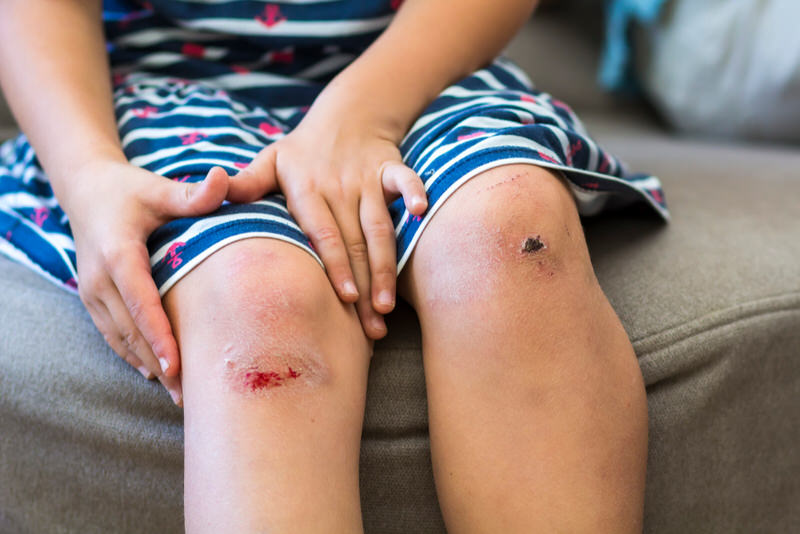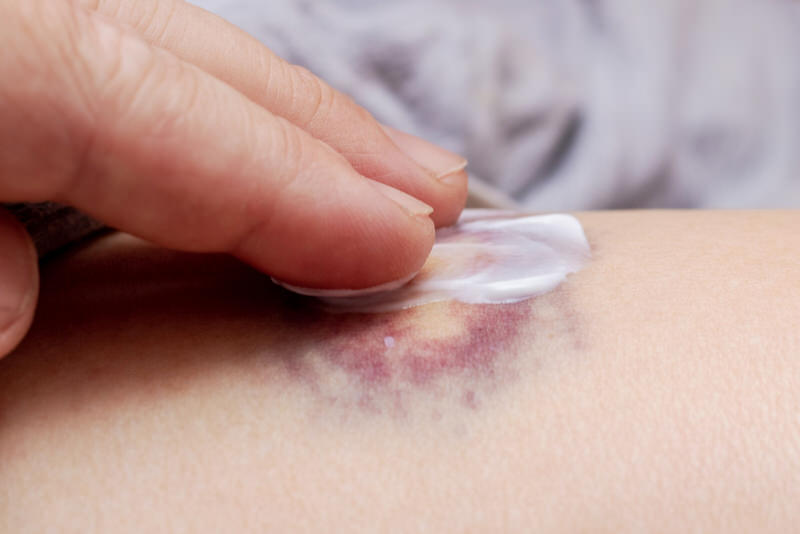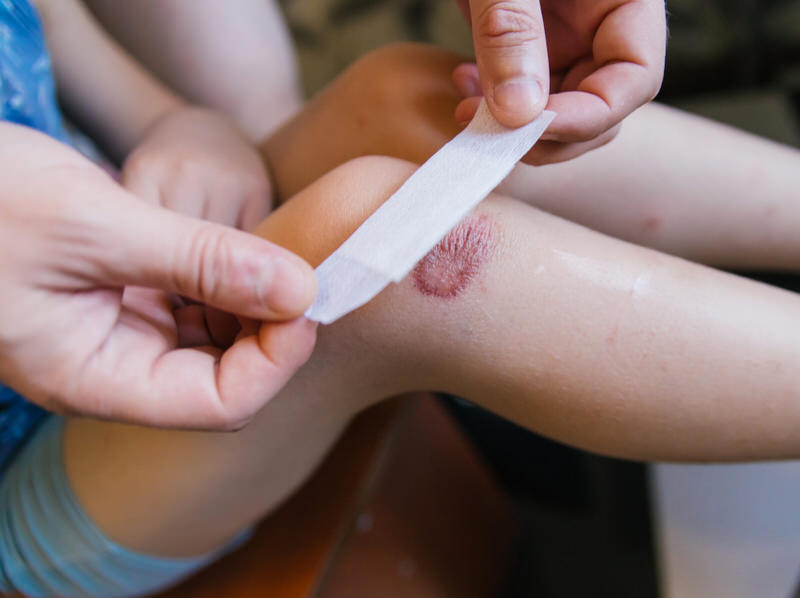When small cuts and minor wounds happen, layers of the skin separate, triggering the body to block the wound opening and facilitate healing. Scars are part of the wound healing process but may worsen if wounds aren’t adequately treated.
In addition, the skin that is in contact with these bandages can also be wounded superficially by adhesives. Some people are also more prone to develop these bandage-related wounds, particularly children and those of older age. People prone to develop dermatitis and those who use bandages for too long may also develop bandage-related wounds.
Avoiding further irritation, contact, and providing a moist wound environment can help heal minor cuts and wounds properly, as well as prevent the surrounding skin from sticking to the bandage adhesive and forming new wounds.
What happens to the skin when it gets wounded?
When the skin is cut by a scratch or graze, the various layers of the skin, called the dermis and epidermis, are breached.
This leaves significant room for foreign bodies and organisms to invade. The body responds by attempting to repair the skin immediately.

According to Johns Hopkins Medicine, there are different stages in wound healing.
The first stage is called hemostasis.
Blood cells arrive at the site and create a clot to seal the body from the environment. Soon after, the second stage, termed inflammation, occurs. White blood cells migrate towards the wound to fend off any potential bacteria.
In proliferation, the third stage, red blood cells produce collagen to fill in the space with new tissue. All these processes ultimately lead to the slow formation of a scab.
This eventually hardens into a scar in the final stage, known as maturation.
Steps in treating minor cuts
1. Stop the bleeding first
Apply direct pressure on the wound using a clean cloth until it spontaneously stops. Active bleeding should stop within 10 minutes.
2. Wash the wound
Rinse the area with running water, then wash with soap for at least 5 minutes.
Gently remove any dirt you may see by scrubbing with your clean fingers or a washcloth.
3. Apply ointment and bandage
After washing, apply a thin layer of petroleum jelly or an over-the-counter antibiotic ointment. Cover the area with an adhesive bandage.
This should be repeated every day or whenever the area becomes soaked with sweat, water, or other fluids.
Lessen your chances of developing scars

Follow all the steps!
Sometimes, simply not following the proper steps can lead to worse scars.
Ensure the wound is cleaned, and apply petroleum jelly or antibiotic creams or ointments.
Know when to seek help
Sometimes, a simple wound is much more complicated, necessitating a local clinic or hospital visit.
Minor diagnostics and procedures, such as radiographs and placing stitches, might be needed if the following warning signs are seen:
- Bleeding for more than 10 minutes
- There’s a thick, creamy-white to gray fluid draining from the wound or cut
- Skin cuts and wounds that are more painful than usual or feel numb
- Gaping or deep wounds
- Cuts that are more than half an inch in length
- Cuts in the face that are more than one-fourth of an inch
- Wounds in areas that limit movement (such as in fingers, toes, or other joints)
- Wounds coming from burns
- Wounds from animal bites
- The presence of fever
Leave the wound alone
Some people are tempted to take a peek and check how the wound is doing. If it’s not time to change the bandage, don’t touch it.
Sometimes the area may become itchy; ignore the urge to apply pressure or scratches on the area.
Keep the wound moist
The use of hydrocolloid occlusive dressings is highly recommended, as it allows for a moist environment.
This encourages the body to form new cells and tissue while lessening pain. When applied properly, a moist dressing does not increase the risk of infection.
Band-Aid Hydro Seal is an example of a hydrocolloid occlusive dressing.
Although we prefer healing wounds to be moist, make sure to use a waterproof bandage. We don’t want unclean or contaminated water to enter those minor cuts.
New wounds from band-aids
Sometimes, the original wound ends up fine, but the surrounding skin gets peeled or scraped out accidentally. Why does this happen?
1. Leaving it on for too long
Chances are, you might have forgotten to change the bandage.
Maybe the wound is already perfectly fine, but people continue to apply adhesive bandages, like Band-Aids, that constantly attach themselves to other areas of the skin. If it’s truly a minor cut, you can stop using bandages after 48 hours (2 days).
2. You’re genetically prone to it
Most adhesive bandages use acrylate and methacrylate to ensure it sticks well onto the skin.
People with an irritant or allergic contact dermatitis may be sensitive to these substances. Other than blisters, allergic reactions may include redness, scaling, and itchiness.
Mild reactions, such as redness and itchiness, may be fleeting and are gone within an hour. For some people, more intense reactions include wounds and blisters from the adhesives.
In these cases, you may apply anti-itch lotions or creams on the surrounding skin affected by dermatitis.
Examples include calamine lotion or 1% hydrocortisone cream. If the itchiness persists, low doses of antihistamines may help.
FAQs
Should wounds be covered or left open?
Most minor cuts and wounds are usually covered with bandages, especially in areas usually in contact with clothing or exposed to dust and dirt. This serves as protection from further abrasion or possible infection.
So far, there has been no scientific evidence that infections are more prone to develop in a moist wound (due to bandages).
What are some alternatives to bandages?
For those allergic to traditional bandage adhesives, alternate bandage types include skin barrier films, hypoallergenic tape, and gauze.
Takeaway
Scars can develop from minor cuts and wounds and even from bandage adhesives, but proper care and appropriate bandages can help minimize scar formation and make them less noticeable.


